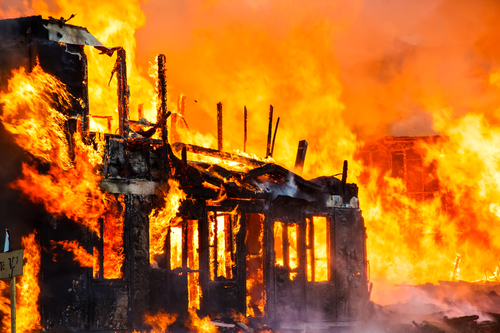Understanding Replacement Cost and Uniform Building Code Requirements

By: Big “I” Virtual University Faculty
A fire destroys a building that was originally built in 1961. The building was insured with a commercial property policy for replacement cost based on current construction costs with adequate values for the location.
The adjuster indicates that the uniform building code requirements in effect since 1961 would only be included in the Ordinance or Law endorsement.
Q: I disagree. Uniform building codes are the essence of replacement cost, along with building materials and labor. This is the very reason that the insurance cost is based upon replacement cost of a building in the current year, with the premium paid accordingly. Does replacement cost include uniform building code requirements?
Response 1: Here’s the irony surrounding commercial property policies, replacement cost and the Ordinance or Law endorsement: On one hand, replacement cost estimators utilize building codes to develop replacement cost, but on the other hand, a commercial property policy does not pay to bring the building into compliance with up-to-date building codes. It’s the Ordinance or Law endorsement that pays all costs associated with meeting these requirements, whether local, state or federal.
This is one of the reasons Coverage A in the Ordinance or Law endorsement pays the difference between the amount of loss and the replacement cost value of the building when written on a replacement cost basis.
Here’s the ISO policy language from form CP 10 30:
B. Exclusions
1. We will not pay for loss or damage caused directly or indirectly by any of the following. Such loss or damage is excluded regardless of any other cause or event that contributes concurrently or in any sequence to the loss.
a. Ordinance Or Law
The enforcement of or compliance with any ordinance or law:
(1) Regulating the construction, use or repair of any property; or
(2) Requiring the tearing down of any property, including the cost of removing its debris.
This exclusion, Ordinance Or Law, applies whether the loss results from:
(a) An ordinance or law that is enforced even if the property has not been damaged; or
(b) The increased costs incurred to comply with an ordinance or law in the course of construction, repair, renovation, remodeling or demolition of property, or removal of its debris, following a physical loss to that property.
The unendorsed commercial property policy does extend to a small amount of ordinance or law-type protection under the Increased Cost of Construction section, which is similar to Coverage C in the Ordinance or Law endorsement, but more limited.
Unfortunately, all of this means the carrier is correct. The commercial property policy pays to put back what was there—there’s no exception in the Ordinance or Law exclusion. Yes, the value of a current-year building is used to develop replacement cost amount, but that is not what the policy has to pay for.
Response 2: Most building codes are incorporated into state and local laws and ordinances. In effect, those building codes are considered costs imposed by ordinance or law and are not inherently covered as replacement cost.
Response 3: If the uniform building codes require reconstruction to a higher standard, the additional cost is not covered.
Response 4: I agree with the adjuster. For the building code changes to be covered, you need the Ordinance or Law endorsement.
Response 5: The replacement cost option only changes the loss payment from actual cash value to replacement cost, but the rest of the policy language is intact.
However, the commercial property policy should contain $10,000 of coverage for built-in ordinance or law coverage:
e. Increased Cost Of Construction
(6) The most we will pay under this Additional Coverage, for each described
building insured under this Coverage Form, is $10,000 or 5% of the Limit of
Insurance applicable to that building, whichever is less.
The remaining coverage should have been included on the Ordinance or Law endorsement, form CP 04 05, which states:
4. Loss Payment
(4) Repair, rebuild or replace the property with other property of like kind and quality, subject to b. below.
b. The cost to repair, rebuild or replace does not include the increased cost attributable to enforcement of or compliance with any ordinance or law regulating the construction, use or repair of any property.
Let your errors & omissions carrier know.
This question was originally submitted by an agent through the VU’s Ask an Expert Service, with responses curated from multiple VU faculty members. Answers to other coverage questions are available on the VU website. If you need help accessing the website, request login information.










